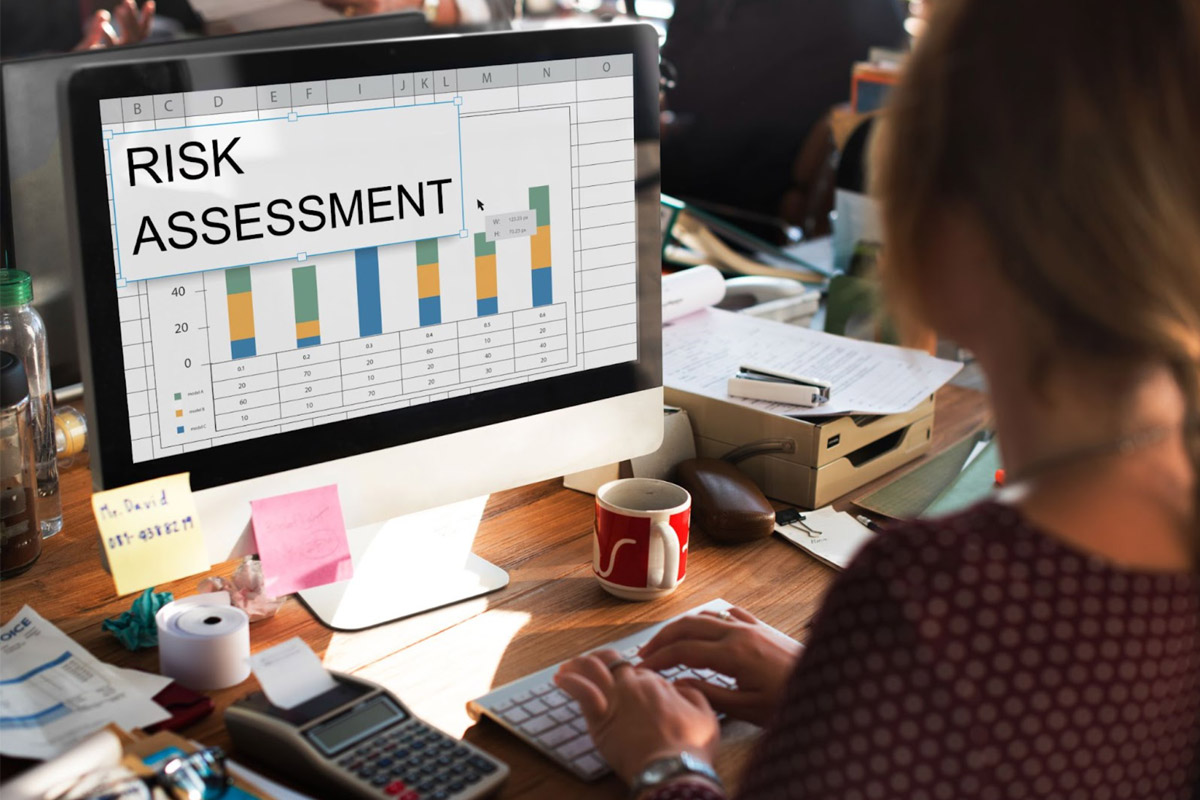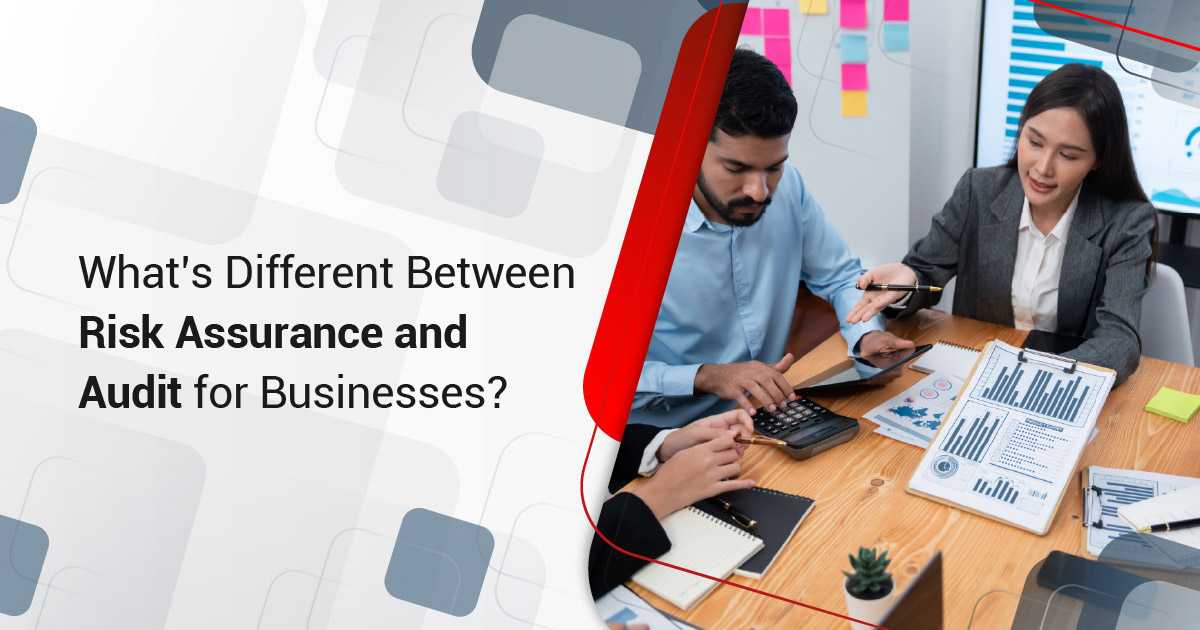When navigating the fast-paced world of corporate governance and financial integrity, two terms often arise in discussions: risk assurance and audit. While these functions share some overlap, they serve distinct purposes within an organisation and play unique roles in maintaining operational resilience and compliance.
Understanding these differences is crucial for businesses striving to maintain high standards of governance, proactively manage risks, and ensure regulatory compliance.
We will explore the key distinctions between risk assurance and audit, their respective goals, and how these processes complement each other in strengthening organisational frameworks in this blog.
What is Risk Assurance?

Risk assurance is a forward-looking and strategic framework that focuses on identifying, assessing, and mitigating risks before they materialise. It ensures that a company’s processes, policies, and controls are robust enough to protect against vulnerabilities across various operational areas.
Key Objectives of Risk Assurance
- Proactive Risk Identification: The primary aim of risk assurance is to detect potential risks that could impact the organisation’s objectives, such as financial loss, regulatory breaches, or reputational damage.
- Continuous Improvement: Risk assurance evaluates whether current policies and systems are effective and provides recommendations for optimising controls and processes.
- Building Stakeholder Confidence: By ensuring that risks are well-managed, risk assurance fosters the confidence of stakeholders, such as investors, clients, and regulatory bodies, in the organisation’s resilience and reliability.
When is Risk Assurance Needed?
Risk assurance is most commonly employed during critical business transformations, such as:
- Launching new products or entering new markets.
- Implementing complex IT systems or processes.
- Navigating regulatory changes that introduce new compliance obligations.
What is an Audit?
An audit, on the other hand, is a retrospective and systematic examination of financial records, processes, or compliance frameworks to verify accuracy, accountability, and adherence to statutory regulations.
Key Objectives of Audit
- Error Detection and Correction: Audits review historical data to detect inaccuracies, procedural gaps, or potential instances of fraud.
- Financial Transparency: By providing an in-depth examination of financial statements, audits instill confidence in the organisation’s reported financial position.
- Regulatory Compliance: Audits validate whether an organisation adheres to relevant laws, industry standards, and internal policies.
What Are the Types of Audits?
Audits vary depending on focus and function. Here are some common types:
- Internal Audits: Conducted by internal teams to evaluate operational efficiency and risk management processes.
- External Audits: Performed by independent firms to provide an unbiased verification of financial statements and compliance.
- Specialised Audits: Focused on niche areas, such as IT systems, supply chain operations, or environmental sustainability.
Key Differences between Risk Assurance and Audit
Despite some overlapping areas, risk assurance and audit differ in several significant ways, as outlined below:
| Aspect | Risk Assurance | Audit |
|---|---|---|
| Focus | Proactive management of current and future risks | Retrospective evaluation of financial records or compliance |
| Objective | Strengthening resilience and preventing risks | Detecting errors, fraud, and ensuring accuracy |
| Approach | Continuous and consultative. | Periodic and formalised |
| Outcome | Recommendations for improvement | Verification and certification |
How Risk Assurance and Audit Work Together

While distinctly different, risk assurance and audit are highly complementary. Together, they provide a comprehensive framework for managing risks and maintaining compliance. Here is how these functions intersect:
Insight Sharing
Risk assurance teams can provide auditors with insights into high-risk areas that require focus, while auditors can share findings that suggest weaknesses in existing risk management systems.
Holistic Governance
Risk assurance focuses on preventing potential issues, while audits ensure that corrective measures are taken after any lapses. Together, they establish a robust governance culture.
Operational Continuity
Risk assurance identifies potential disruptions to operations, and audit ensures these disruptions are either avoided or mitigated through proper compliance and best practices. For example, during an IT system implementation, a risk assurance team might highlight potential vulnerabilities in security protocols, while an audit may later verify whether these vulnerabilities were effectively mitigated.
Why Understanding the Difference Matters
For businesses, understanding and executing both risk assurance and audits effectively is essential to thrive in a competitive and heavily regulated world. Each function brings unique benefits:
- Risk Assurance: Allows organisations to stay ahead of emerging threats and focus on sustainable business growth.
- Audit: Provides foundational confidence in financial transparency and legal compliance.
Neglecting either of these areas could expose a business to unnecessary risks and reputational harm, underscoring the importance of adopting a balanced, integrated approach.
Final Thoughts

Risk assurance and audit may operate in distinct spaces, but together they form the backbone of a resilient and compliant organisation. While risk assurance focuses on identifying future challenges and strengthening existing processes, audit concentrates on verifying historical accuracy and adherence to standards.
By working hand in hand, these processes provide invaluable insights, ensuring that businesses comply with regulations and proactively adapt to the evolving risk landscape. If your organisation has not yet embraced these functions comprehensively, now is the time to prioritise both – your stakeholders, employees, and customers will thank you for it.
Interested in strengthening your governance framework? Begin your proactive risk management and compliance strategy today to safeguard your company’s future with our experts at InCorp. Contact us today to find out more!
FAQs about Cancellation of Work Pass
Is risk assurance the same as audit?
- No, risk assurance and audit are not the same, although they are closely related and often complement each other.
What are some risk assurance vs audit examples?
- One example is that risk assurance identifies areas where fraud could occur, such as weak internal controls over cash handling. On the other hand, an internal audit investigates whether any fraudulent activities have occurred and whether the controls in place are effective.
How can InCorp help?
- Our risk assurance and audit experts can assist in both services tailored to your specific needs.


